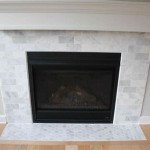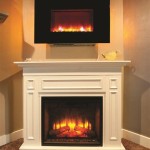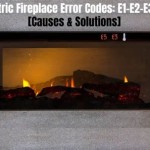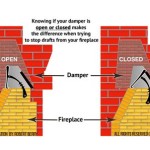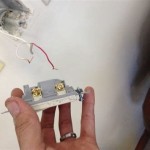The Allure of Apartments With Fireplaces
The presence of a fireplace in an apartment significantly alters the living experience, transforming a standard rental unit into a warm and inviting home. Beyond its functional purpose as a supplemental heating source, a fireplace contributes a unique aesthetic appeal and fosters a sense of comfort and relaxation. The demand for apartments with fireplaces reflects a desire for a living space that combines modern convenience with traditional charm.
Several factors contribute to the enduring popularity of fireplaces in apartment settings. The visual appeal of a flickering flame, the tactile warmth emanating from the hearth, and the psychological association with comfort and security all play a role. Furthermore, a fireplace can serve as a focal point in a room, enhancing the overall design and creating a more inviting atmosphere for residents and guests.
The decision to seek out an apartment with a fireplace involves careful consideration of various factors, including the type of fireplace, safety features, maintenance requirements, and potential associated costs. Understanding these aspects allows prospective tenants to make informed choices and appreciate the benefits while mitigating potential drawbacks.
Enhanced Aesthetic Appeal and Ambiance
One of the primary draws of apartments with fireplaces is the immediate enhancement of the living space's aesthetic appeal. A fireplace serves as a natural focal point, drawing the eye and creating a sense of visual interest. The design possibilities are vast, ranging from classic brick fireplaces to modern, streamlined gas inserts. The style of the fireplace can complement the overall décor of the apartment, contributing to a cohesive and visually pleasing environment.
The ambiance created by a fireplace is often described as warm, inviting, and relaxing. The soft glow of the flames casts a gentle light, reducing the need for harsh artificial lighting and promoting a sense of tranquility. The crackling sound of a wood-burning fireplace, while less common in apartments due to safety and logistical concerns, can further enhance this feeling of coziness and connection to nature. Even gas or electric fireplaces offer a similar, albeit less authentic, auditory experience.
Beyond the visual and auditory aspects, a fireplace contributes to a feeling of psychological comfort. The association with hearth and home evokes a sense of security and belonging. This can be particularly appealing in apartment living, where residents may be seeking to personalize their space and create a sense of permanence. The fireplace becomes a symbol of comfort and a place to gather, making the apartment feel more like a home.
The presence of a fireplace can also add a touch of elegance and sophistication to an apartment. This can be particularly important for renters who prioritize style and design. A well-maintained and thoughtfully decorated fireplace can elevate the overall look and feel of the apartment, making it more appealing to both residents and guests.
Functional Benefits: Supplemental Heating and Energy Efficiency
While the aesthetic and emotional benefits of a fireplace are significant, its functional role as a supplemental heating source should not be overlooked. In colder climates, a fireplace can provide a valuable boost to the apartment's central heating system, helping to maintain a comfortable temperature and potentially reducing heating costs.
The efficiency of a fireplace as a heating source depends on several factors, including the type of fireplace, the quality of the installation, and the overall insulation of the apartment. Wood-burning fireplaces, while aesthetically appealing, tend to be less efficient than gas or electric models. This is due to heat loss through the chimney and the difficulty of controlling the burn rate. Gas and electric fireplaces offer greater control over heat output and can be more efficient at heating a specific area of the apartment.
Using a fireplace as a supplemental heating source can be particularly advantageous during peak heating times or when only a small portion of the apartment needs to be heated. Instead of turning up the central heating system to warm a single room, the fireplace can provide targeted warmth, potentially saving energy and reducing utility bills. However, it is important to note that using a fireplace as the primary heating source in an apartment is generally not recommended due to safety concerns and potential inefficiency.
Modern advancements in fireplace technology have led to the development of more efficient and environmentally friendly options. Direct-vent gas fireplaces, for example, draw combustion air from outside the apartment and vent exhaust gases directly outdoors, minimizing heat loss and improving air quality. Electric fireplaces offer a clean and convenient heating option, with some models featuring realistic flame effects and adjustable heat settings.
The use of a fireplace for supplemental heating can also enhance the overall comfort of the apartment. The radiant heat emitted by a fireplace provides a gentle and comforting warmth that can be particularly appealing during cold winter months. This can create a more inviting and relaxing atmosphere, making the apartment feel more like a sanctuary from the elements.
Safety and Maintenance Considerations
While the benefits of a fireplace in an apartment are numerous, it is essential to consider the potential safety and maintenance implications. Fire safety should be the top priority for both tenants and landlords, and adherence to established safety protocols is crucial for preventing accidents and ensuring the well-being of residents.
Regular inspections and maintenance are essential for ensuring the safe operation of a fireplace. For wood-burning fireplaces, this includes annual chimney cleaning to remove creosote buildup, which can pose a significant fire hazard. Gas fireplaces should be inspected by a qualified technician to check for gas leaks and ensure proper ventilation. Electric fireplaces require minimal maintenance but should be inspected periodically for any signs of damage or malfunction.
Proper ventilation is crucial for all types of fireplaces. Wood-burning fireplaces require a functioning chimney to vent smoke and exhaust gases safely. Gas fireplaces typically have direct-vent systems that exhaust gases directly outdoors. Electric fireplaces do not produce exhaust gases, but proper ventilation is still important to prevent overheating.
Tenants should be educated about the safe operation of their fireplace. This includes understanding how to properly light and extinguish a fire, how to operate the gas valve on a gas fireplace, and how to use the remote control on an electric fireplace. Tenants should also be aware of the location of fire extinguishers and smoke detectors in the apartment and know how to use them in case of an emergency.
Specific safety guidelines should be followed for each type of fireplace. For wood-burning fireplaces, this includes using only seasoned wood and never leaving a fire unattended. For gas fireplaces, this includes regularly checking for gas leaks and ensuring that the pilot light is properly lit. For electric fireplaces, this includes avoiding overloading electrical circuits and ensuring that the unit is properly grounded.
Carbon monoxide poisoning is a serious risk associated with fireplaces, particularly those that burn fuel. Carbon monoxide is a colorless, odorless gas that can be lethal if inhaled in high concentrations. Carbon monoxide detectors should be installed in all apartments with fireplaces, and tenants should be aware of the symptoms of carbon monoxide poisoning, which include headache, dizziness, nausea, and shortness of breath.
Maintenance responsibilities should be clearly defined in the lease agreement. Typically, landlords are responsible for major maintenance tasks, such as chimney cleaning and gas fireplace inspections, while tenants are responsible for basic upkeep, such as cleaning the fireplace and ensuring that the area around the fireplace is free of flammable materials.
By prioritizing safety and adhering to established maintenance protocols, tenants and landlords can enjoy the benefits of a fireplace in an apartment while minimizing the potential risks.
In conclusion, apartments with fireplaces offer a unique blend of aesthetic appeal, functional benefits, and potential safety considerations. The decision to seek out a rental unit with a fireplace requires careful evaluation of individual needs and preferences, as well as a thorough understanding of the responsibilities associated with owning and maintaining such a feature. With proper planning and attention to detail, a fireplace can transform an apartment into a warm, inviting, and comfortable home.

Get Cozy By The Fireplace In One Of These Five City Apartments For

10 Nyc Apartments With Fireplaces On The Market Right Now Purewow

Fireplace Safety Tips Apartments Condos Amtrust Insurance

In New York The Fireplace Flickers Times

3 Apartments With Fireplaces To See This Weekend Columbia Street Waterfront District New York Dnainfo

Sure It S Romantic But Is A Working Fireplace In New York City Worth The Work

In Time For Shorter And Cooler Days See Nyc Apartments With Fireplaces Cityrealty

5 Types Of Fireplaces For Apartments Homes Without Chimneys Modern Blaze

10 Nyc Apartments With Fireplaces On The Market Right Now Purewow

Are Ethanol Fireplaces Safe For An Apartment Modus
Related Posts

